From Unspunnen Castle near Interlaken, the venue of the first alphorn meeting in 1805, a road leads seven kilometers up to Habkern. There Heinz Tschiemer builds the Bernatone alphorns. The closeness to tradition is not limited to geography: for Heinz, the alphorn is part of the pastoral culture in which he grew up and is firmly rooted. In addition to alpine horns, his family produces mountain cheese on their own farm; his father has a sawmill that also supplies the wood for the horns. Heinz took over Bernatone from Arnold von Allmen in 2012 – when he was just 29 years old. Since then, he has continued to develop the alphorns on a full-time stint.
Solid craftsmanship is at the forefront of his philosophy. You notice that this is authentic when you shake hands for the first time. Heinz has great respect for the alphorn builders who developed the rustic natural horns into musical instruments a hundred years ago. Nevertheless, he relies on modern production methods. His predecessor was the first to use CNC machines, and Heinz is consistently following this path. Two large CNC machines are at the center of his workshop. The main argument is consistency: the horns produced in this way are virtually identical in sound and intonation. Added to this is efficiency: thanks to the use of computerized machinery, a Bernatone alphorn still requires 50 working hours before it leaves the store. Together with a part-time employee, Heinz thus produces up to 60-70 alphorns and 5-10 Büchels per year.
The consistent use of tone wood from the immediate surroundings is one of its selling points. The wood comes from 1300 up to 2000 meters above sea level. With the sawmill in the family, Bernatone has access to excellent raw material. However, he can’t guarantee moon wood. He explains that it is not possible to see wheter a tree is tone wood befor the timber is cut in the sawmill, and loggers can’t work only three days a year.
In appearance, Bernatone produces classic Bernese alphorns – extravagant are only the red anodized bushings (like Prada women’s shoes?). At 3.5-4kg for an F# horn, they are on the massive side. The cup has an outer diameter of 22cm. The workmanship is clean on a high level. In alphorns are oiled inside and painted outside. Heinz is not a fan of unwound alphorns. The hoop at the transition between the pedigree tube and the cup is his bow to the art of white coopers like an Adolf Oberli. He signs the plain little foot with “Tschiemer”.
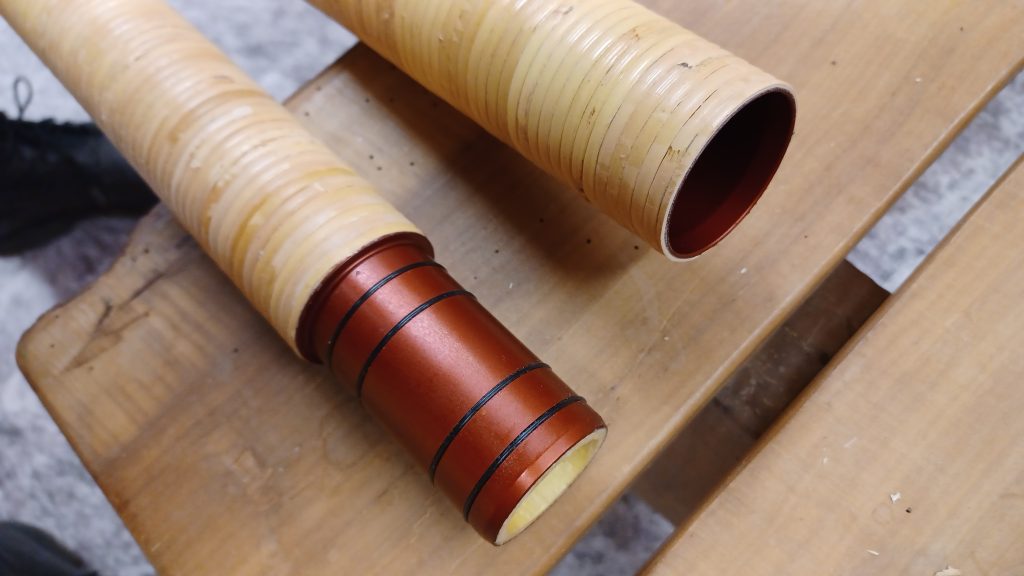
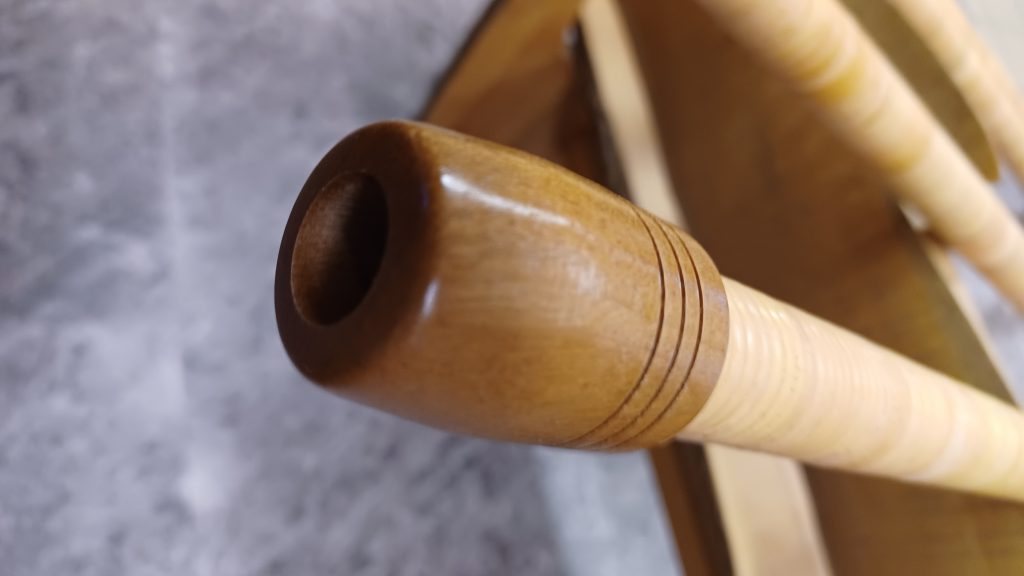
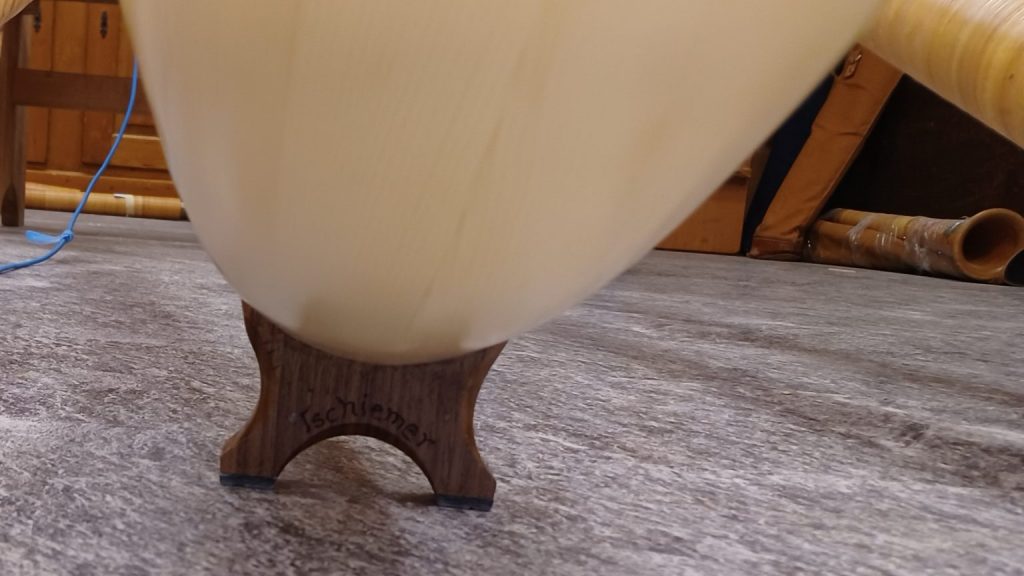
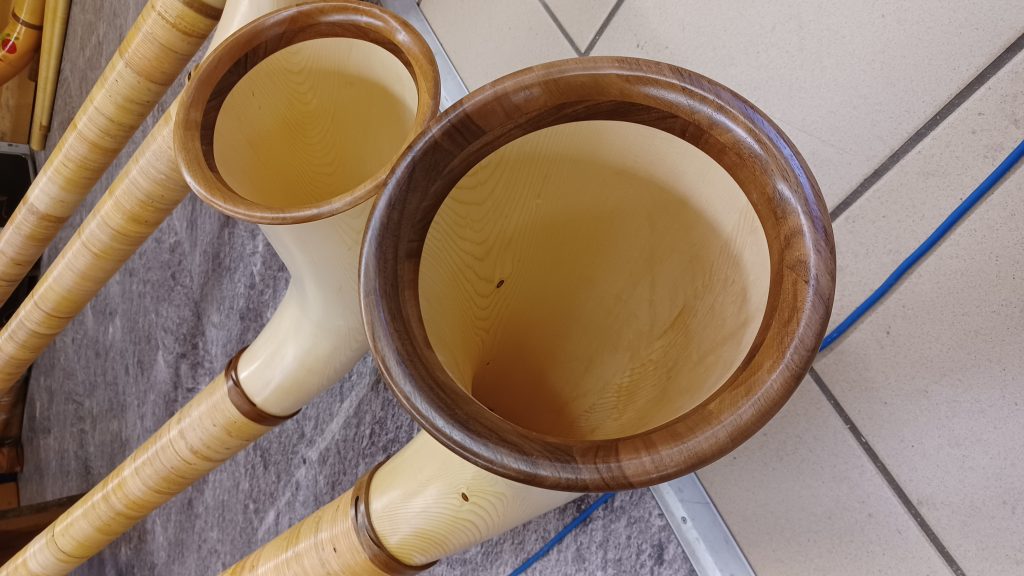
The old Bernatone horns did not have the best reputation regarding intonation. However, Heinz has further developed the inner workings of his instruments, working closely with Sami Lörtscher since 2014. Together with him he tunes each horn exactly to a1=442Hz. The B.I.A.S. system is also used, with which intonation and response can be objectively measured. Customers receive a certificate documenting the precise tuning. The continuous improvements have paid off. I was able to play two 3-piece and two 4-piece alphorns in his showroom. All instruments intoned between c and c”’ very close to the theoretical natural scale; the minimal deviations of 10-12 cts in the range g’ to c” are no problem for reasonably experienced wind players. The tone leaps run clearly (especially upwards) and the notes sit very solidly; conversely, they can only be bent to a limited extent. I noticed positively that the horns produce a round sound even with very little air. The harmonics are nicely evenly distributed across the entire dynamic range – from pianissimo to fortissimo. Fast passages can be played cleanly, though I found the staccato relatively soft. In terms of sound, response and intonation, I could not detect any significant difference between 3- and 4-piece horns.
A Bernatone alphorn with bag “robusto” and two mouthpieces costs 3’600 CHF (3-piece) or 3950 CHF (4-piece). The horns are built in F#; for tuning in F there are extensions or at most separate hand pipes. Heinz produces batches of 6 or 8 at a time and sells them within a short time of completion. So if you want a Bernatone horn, you should strategically plan your visit. Additional information and videos can be found on the Bernatone website. A visit to Habkern is worthwhile for the collection of historic alphorns in the showroom alone. In the video below a few impressions of my visit on 19.12.2022.
Conclusion: A high-quality, solid alphorn. Round, beautiful sound. A likeable alphorn maker with the stable smell of the traditional alphorn scene, who is constantly developing and will (hopefully) stay in business for a long time.
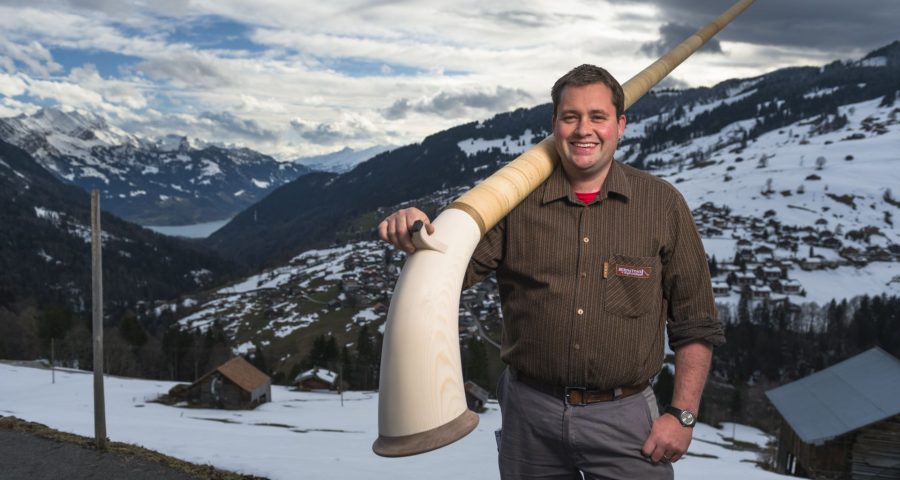
Leave a Reply